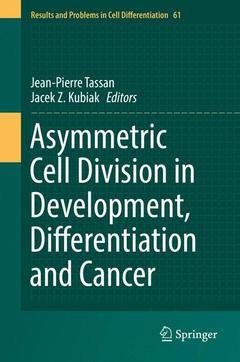Description
Asymmetric Cell Division in Development, Differentiation and Cancer, Softcover reprint of the original 1st ed. 2017
Results and Problems in Cell Differentiation Series, Vol. 61
Coordinators: Tassan Jean-Pierre, Kubiak Jacek Z.
Language: English
Subjects for Asymmetric Cell Division in Development, Differentiation...:
Publication date: 04-2017
Support: Print on demand
Publication date: 07-2018
Support: Print on demand
Description
/li>Contents
/li>Comment
/li>
This book provides readers with an overview of the frequent occurrence of asymmetric cell division. Employing a broad range of examples, it highlights how this mode of cell division constitutes the basis of multicellular organism development and how its misregulation can lead to cancer.
To underline such developmental correlations, readers will for example gain insights into stem cell fate and tumor growth. In turn, subsequent chapters include descriptions of asymmetric cell division from unicellular organisms to humans in both physiological and pathological conditions. The book also illustrates the importance of this process for evolution and our need to understand the background mechanisms, offering a valuable guide not only for students in the field of developmental biology but also for experienced researchers from neighboring fields.




